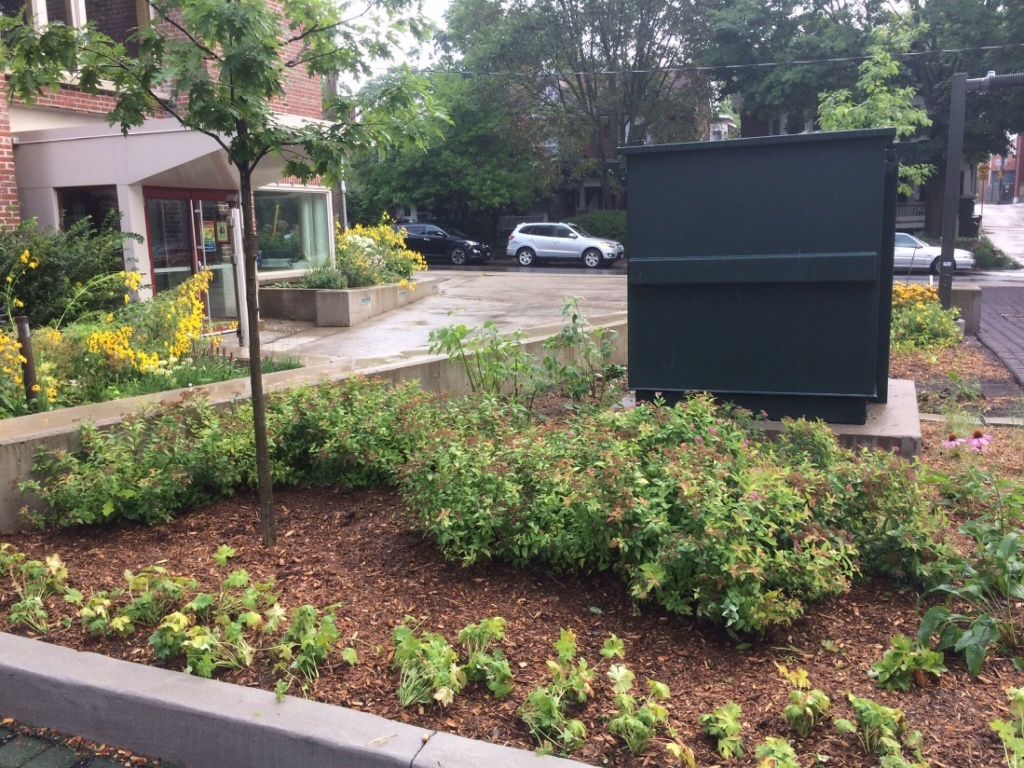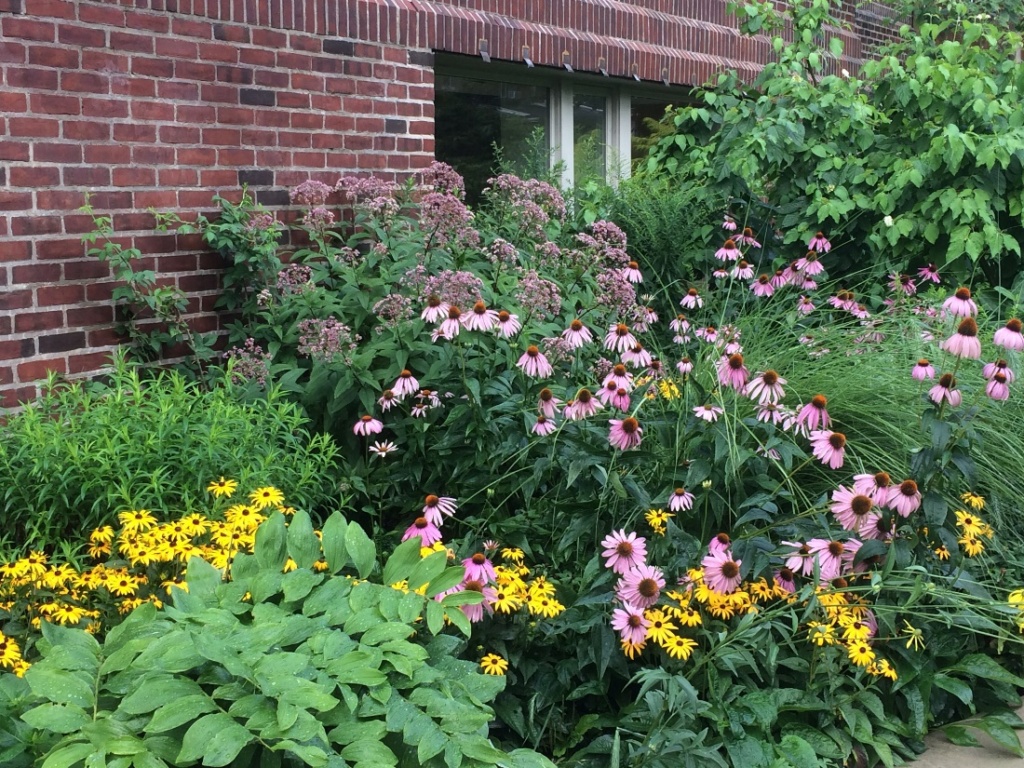Close to fifteen members of the congregation worked together through August, landscaping the new parking lot. Initial steps included planting several trees (3 Honey Locust, 2 maples and 2 oaks), and identifying some 30 – 40 different plants and shrubs that would be hardy, low maintenance and provide colour and visual interest.
This was followed by substantial preparation work: clearing construction rubble, removing brush, soil improvements and weeding areas where Mother Nature hadn’t waited!
Let’s take a tour of just the most visible part, the north border nearest the church building: starting from the Wineva Avenue sidewalk, a new Honey Locust tree in the picture below is surrounded by newly planted roses (just one in flower now) and daylilies in a variety of colours – yellow, orange and cream.

Just out of sight on the left are three Serviceberry, a native shrub which will have masses of white flowers in spring and saskatoon berries in the fall.
Walking towards the church main door, the next bit of garden is split in two by a massive electrical transformer box. But already, its presence is offset by the bright colours of Black-eyed Susans and Potentilla in the next picture, and Dahlias in the following two:

The Potentilla in the foreground above is aka Cinquefoil, on account of its distinctive 5 lobed leaf structure. Historical note: The 5 lobed leaf was the symbol of Sir Bardolph the Brutal, second in command of King William’s forces when he defeated the British at the battle of Hastings in 1066.
In the picture below, these Ball Dahlias, being newly planted, would appreciate a bit of staking:

This second dahlia picture shows just a single flower head right now, hidden under its leaves. But a close look reveals other flower buds which might still come out this year.

And on the other side of the transformer box, along with colourful ground cover (Ajuga and Pulmonaria) there is a mass planting of pink Spirea and yellow Dogwood. These are hardy native shrubs that will maintain their colour all through summer and early fall.

Just visible on the right of the transformer, the sun-loving Cone plant will grow to be much bigger and will have masses of blooms. Its Latin name is Echinacea; it can also be yellow and very hard to distinguish from Black-Eyed Susans, leading to the botanist joke – here’s another DYC – damn yellow confusion.
Some of the plants were purchased, but many were transplanted from the existing church garden, including the DYC’s, Little Bluestems, iris, and Bee Balm shown in the above tour of the northern border. In the southern border Hosta, Solomon’s Seal, Evening Primrose, Periwinkle and Bleeding Hearts from the church garden joined the purchased Burning Bush euonymus and alpine currant.
And there’s more to come from the current garden. Turning from the parking lot towards the church main door, one is met by a profusion of colour, an area only a few years ago was just a bare construction site!

In the picture above, the Joe Pye at the back is ready to be cut back and given a new home around the parking lot. Likewise, The Solomon’s Seal in the foreground, and some of the beautiful Japanese Anemone by the south window. A garden is always a “work in progress “.
